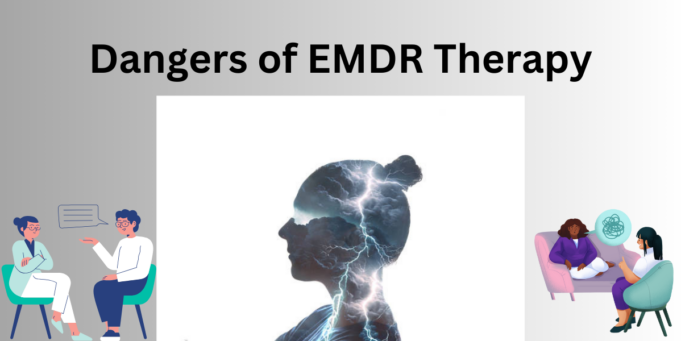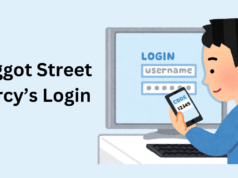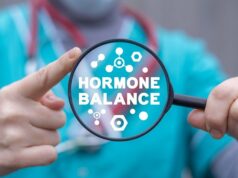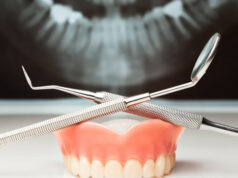If you do not know much about EMDR therapy and are thinking about it for your teenager or young adult, you might be worried about whether it is safe. EMDR therapy is safe, but there are some wrong ideas about it. Before we talk more about this, it is useful to understand what EMDR therapy is.
Sometimes, young people who have been through something really bad or stressful do not fully understand or deal with those experiences. Then, when there is something that reminds them of that bad thing, like something they see, hear, or feel, they feel like they are going through it all over again.
EMDR therapy helps by using eye movements to change how the brain remembers these things. It helps young people slowly work through their past and reduce their feelings of fear and stress.
Is EMDR Therapy Safe for Teens and Young Adults
When we ask, “Can EMDR therapy be bad?” Tuono-Shell says that it is safe for young adults and young adult or teenagers teen when it is done right.
The “bad things” that people talk about with EMDR therapy happen when young people get this treatment from someone who is not properly trained and certified in it. For example, those who are not trained well might not do all the proper steps of EMDR therapy or teach young people the skills and tools they need to handle their feelings and thoughts during the treatment.
Research has shown that EMDR is a safe way to help young people. A study in the European Journal of Psychotraumatology looked at teenagers with major depressive disorder and found that EMDR is safe, and it helps reduce the bad feelings of depression.
What Happens After EMDR Therapy
Sometimes, when people have therapy, like talking to a counselor, it can make them feel weird or have extra feelings, which we call “side effects.” This can also happen with EMDR therapy, even though studies say it is safe and works well. If these side effects happen, they might make your teenager feel strange in their mind or body.
IMPORTANT LINKS
- Baggot Street Mercy’s Login Features
- BlueFire Wilderness Complaints: An Overview
- 4 Ways to Become a Certified Indoor Cycling Instructor
- Wellhealthorganic.com : morning coffee tips with no side effect
- From Data To Insight: Leveraging Automated Metadata Management In Healthcare
- Negin Behazin vs Dignity Health
- Lemon Cherry Gelato Strain
- Hormone Health Experts and the Management of Menopause in Women
- The Truth About Cheap Dental Implant Surgeries
- Dangers of EMDR Therapy
Mental Health Effects of EMDR
Some common things that might happen in your mind after EMDR therapy include:
- Strange or clear dreams: Your brain naturally sorts and remembers things in dreams after EMDR.
- Feeling emotions strongly: Your teen or young adult might be more in touch with their feelings and thoughts, which can make them more sensitive.
- Memories coming back: This therapy can help bring back memories that were hidden before.
These mental health effects can be a part of feeling better. Like, Tuono-Shell said, “When my clients have dreams or remember things, it is often a good thing. It helps them remember things they could not before and makes them less anxious or upset.”
Physical Effects of EMDR
Because the mind and body are connected, your teenager might feel some physical changes during and after EMDR therapy:
- Headache: Sometimes, EMDR uses eye movements that can cause headaches. However, a trained therapist can use other EMDR methods for teens with headaches or migraines, like tapping the body or listening to sounds with headphones.
- Feeling Sick: Feeling queasy in the stomach can happen, but it is not a big problem. Tuono-Shell says it does not last long, and you will not leave the session feeling sick all the time.
- Tiredness: After the session, your teen might feel emotionally and mentally tired and need some rest.
Does EMDR Therapy Really Help
Now that you know more about this treatment, you might be asking, “Does EMDR therapy really help?” Studies like the one we talked about earlier have shown that it can help people who have mental health problems. Tuono-Shell, the therapist, said she has had much success using it with her clients.
One reason it works, she said, is because it is a slow and step-by-step process. It has eight different parts.
“Your teenager or young adult does not jump right into dealing with their tough memories,” Tuono-Shell explained. “First, we learn about their history, and then we give them ways to handle their feelings. If they feel bad outside of our sessions, they can use those skills. We do not move on until they can use those skills.”
Tuono-Shell also mentioned that there are many good things about this treatment.
Advantages of EMDR Therapy
EMDR therapy has some good things about it:
- Quick results: “You can see changes quite fast,” Tuono-Shell said. “It is not like talking therapy, which can take many years. With EMDR, your teenager or young adult might notice positive changes in just 3-5 sessions.”
- Less negative thoughts: In one part of the eight-step EMDR process, therapists help find any thoughts and bad beliefs young people have about their past, and they help them think better, more positive things instead.
- More self-confidence: Bad experiences can make young people feel bad about themselves. Working through these memories in EMDR can help your young adult or teen feel stronger and better about themselves.
- Great for trauma and PTSD: EMDR was first used in the 1980s to help with post-traumatic stress disorder (PTSD) and trauma, and it is still a top choice for these issues.
- Not much talking about painful stuff: “When I do talking therapy, sometimes teens do not want to share everything, or it is hard to talk about everything,” Tuono-Shell said. “With EMDR, they do not have to tell all the details. We just follow the steps, which makes them feel like they do not have to share all the painful things.”
Why Some People Are Unsure About EMDR Therapy
So, why are some people unsure about EMDR therapy? Tuono-Shell explained there are different reasons, such as doubts about whether it is proven by evidence, concerns that it could make mental health problems worse, ideas that it is a kind of hypnosis, and the belief that it is only for treating PTSD.
For example, some might think it is not real, like a trick. Others might wrongly believe that, unlike regular talking therapy, EMDR is fake science and not proven by evidence.
Let us check out four mistaken ideas that some people have about EMDR.
EMDR is Proven to Work
If you are thinking, “Does EMDR really work?” the answer is yes. The Cleveland Clinic says, “Many tests done since EMDR was created show that this method is effective and can help a person faster than many other methods.” You can find this research on the EMDRIA website.
EMDR Does not Make Mental Health Issues Worse
You might worry that EMDR could make existing mental health problems worse because the treatment can be intense. However, according to Tuono-Shell, it does not.
“When you have had a tough experience in life and connected bad feelings, thoughts, or sensations to it, EMDR deals with that,” she explained. “But all those feelings were already there – it is not like you are making something new or worse. You are actually reducing the symptoms you are already going through.”
EMDR is Not the Same as Hypnosis
Even though EMDR and hypnosis seem similar, they are not the same.
“EMDR uses specific plans and different ways to stimulate both sides of the brain,” Tuono-Shell explained. “The stimulation can happen visually with eye movements, by tapping, or by listening with headphones.
Hypnosis does not have such a strict structure – it does not follow a step-by-step model like EMDR usually does. Also, people can teach themselves hypnosis, but EMDR has to be done in a professional place with someone trained in that method. Hypnosis can be used in places like clinics and even outside of them.”
EMDR Is not Just for PTSD
Some people mistakenly think that EMDR is only for treating PTSD, but therapists use this therapy for other mental health problems too.
“It works for many issues besides PTSD,” explained Tuono-Shell. “I’ve helped many people with anxiety and certain fears, and it is useful for childhood trauma as well.”
In addition to treating PTSD, a review of research in Frontiers showed that EMDR also helped with problems like eating disorders, addictions, anxiety about performing, sleep issues, and obsessive-compulsive disorder (OCD).
What to Do Next with EMDR Therapy
EMDR therapy might have some disagreements, but it can help with many mental health issues. Moreover, if you’re wondering if it can be harmful, studies show it is safe.
If you’re interested in trying it for your teenager or young adult, and they are already getting therapy, you can ask if their therapist is certified in EMDR. If not, see if they can suggest someone who is. EMDRIA certification means therapists have the right training in this method and have experience with it. If your child is not in therapy, find a therapist who can check if EMDR is a good fit.
When you are working with a therapist, the most important thing is having a good connection with them. It is called a “therapeutic alliance.” This means you, your teenager or young adult, and the therapist are on the same page about what you want to achieve, which makes the treatment work better.
So, now that you have learned about EMDR, seen that it is safe, and heard about the therapeutic alliance, what should you do next?
“I suggest parents look for a list of certified EMDR therapists,” Tuono-Shell said. “Then, go meet with them as a family and talk to them. If you feel your teenager or young adult can build a strong, positive connection with the therapist, it is a sign you have found the right person to provide treatment because that positive connection is the main thing that helps with healing.”


















